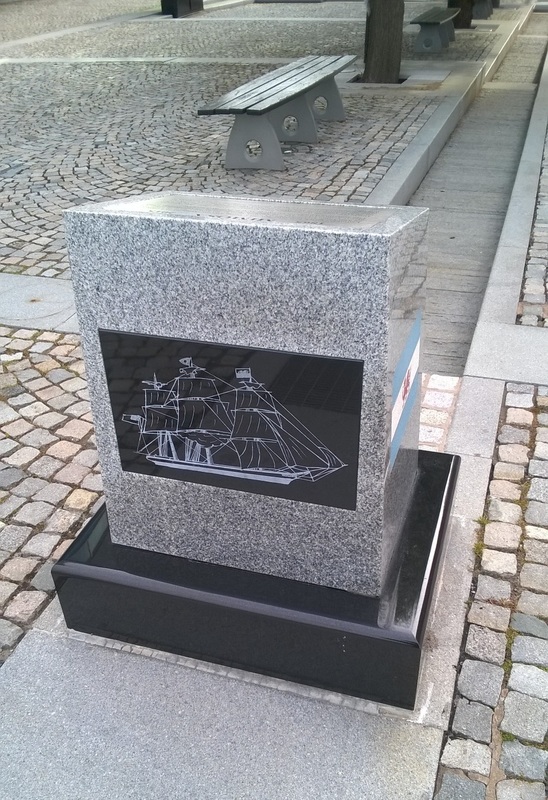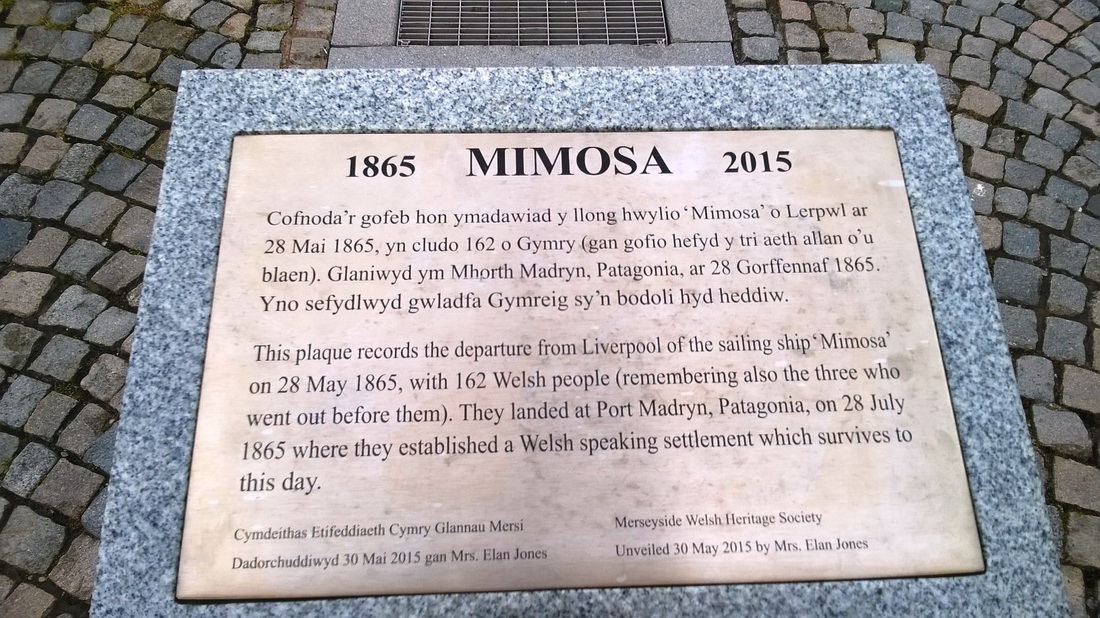In May 1865 the tea clipper Mimosa was in Liverpool's Clarence Graving Dock being fitted out for a voyage to carry Welsh emigrants to Patagonia in South America. Mimosa was at the time 12 years old and not apparently the first vessel of choice. The vessel Halton Castle which was better equipped to carry passengers was to have taken the voyage in April 1865 but for some reason was still at sea and a such unavailable.
Within the hold partitions were constructed to separate the men's sleeping quarters from the women's and the areas were fitted out with tables, benches and other items for the passengers. The cost of fitting, provisioning and chartering Mimosa was £2,500. The fare for adults was £12 and £6 for children, although. The duration of the voyage was uncertain and provisions sufficient for a six month voyage were stored.
Mimosa's Captain was George Peperell and he assembled a crew of 18 which was a larger one than than needed for carrying only cargo. Most of the crew were from Liverpool with two sailors from a Swedish ship and another from a Portuguese vessel. Upon discovering that his passengers were almost all solely Welsh speaking the Captain signed on a young Welshman called Richard Berwyn as purser (Richard later became the first school teacher of the colony). Because, by law, a doctor was required for any ship carrying more than fifty passengers, a young doctor from Ireland called Thomas Greene, who had just completed his medical studies and who was looking for a medical position overseas was signed on as ship's surgeon.
The passengers numbered 153 and came from all parts of North and South Wales. There were 56 married adults, 33 single or widowed men and 12 single women who were either sisters of married passengers or servants, the remainder were children or babies.
Mimosa left Clarence Graving Dock on 25 May 1865 and was towed into Victoria Dock, a few days later on 28 May1865 she left the River Mersey and headed out into the Irish Sea.
The journey took 65 days and despite the daily issue of lime or lemon juice as a precaution against scurvy, many of the passengers began to suffer from boils and bleeding gums. The conditionas below decks particularly in the tropics was appalling
Five children died on the voyage and two babies were born.
A widow and widower were married sortly after leaving Liverpool.
At a Brazilian port where they stopped to replenish provisions the Captain tried unsuccessfully to persuade the passengers to disembark to join a colony already established in Brazil.
As Mimosa sailed further south they encountered the cold of the South Atlantic.
On clear days columns of vapour could be seen far out to sea. The thought of steamships sailing so far south was a comfort to the passengers that their destination was not as isolated as they had been led to believe. It was the mate who realized that the "smoke" was not from steamships, but from whales.
Finally, just before dawn on 27 July 1865 Mimosa reached her destination and dropped anchor in a natural harbour comprising a semi-circle of rocks, some 8 miles wide and 22 miles in length. Most of the passengers dressed in their best clothes were on deck before dawn. At about one o'clock in the afternoon there was a gunshot from shore and by late afternoon Lewis Jones and Edwyn Roberts rowed out to where Mimosa was anchored and came on board.
Disembarcation took more than a day as the passengers had to be rowed to shore along with their possessions which included farm implements and pieces of furniture. The ship's cook elected to remain with the colony and left the ship.
On the next day everyone gathered on the beach. A short sermon of thanks was held and the place where they stood was named Port Madryn after Madryn Castle on the windswept Llyn Peninsular in North Wales.
Little is known of Mimosa after her voyage to Patagonia except that in the following year the entire crew mutinied over short rations and Pepperell was incarcerated on board.
What became of her is not known.


 RSS Feed
RSS Feed
